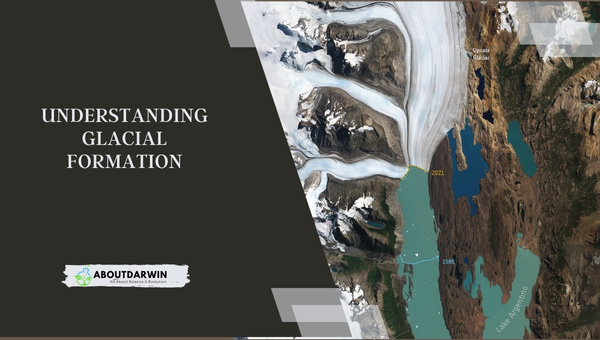Physical Address
304 North Cardinal St.
Dorchester Center, MA 02124
Glaciers are gigantic, slow-moving masses of ice that have a significant impact on our planet’s landscape and climate. They form in areas where the accumulation of snow and ice exceeds their loss, typically in higher altitudes and colder regions. Understanding how glaciers develop is key to appreciating the intricate balance of our natural world, as these colossal ice giants store about 69% of the global freshwater supply.
At its core, the formation of a glacier starts with one essential ingredient: snow. As snow accumulates over time and becomes compacted, air escapes, and the snow crystals consolidate, eventually turning into ice. Two key factors contribute to this process: the snow’s weight and the freezing and thawing of water within the snowpack.
Once a thick layer of ice forms, a glacier starts to move due to gravity and the pressure of its own weight. The slow movement, known as glacial motion, can cause glacier tongues to ‘flow’ down a mountain, carving out remarkable landscapes along the way. Observing and learning about how glaciers form helps us understand Earth’s geological history and the various phenomena associated with climate change.
The process of glacial formation is quite fascinating, and it’s essential to comprehend how these massive ice structures are formed. Before we dive into this, let’s first remind ourselves that glaciers are large masses of ice formed from compacted snow over time.

To understand the formation of a glacier, we need to talk about snow accumulation and compaction. When snow accumulates in an area with a consistently cold climate, it compacts over time, transforming into ice. This transformation occurs through several stages:
A critical factor in the formation of a glacier is the accumulation zone, which is the area where snowfall exceeds the loss of ice from processes like melting, sublimation, or calving (the breaking off of icebergs).
As snow continues to accumulate, the weight of the upper layers causes the ice to behave like a slow-flowing liquid. The movement of this ice is what characterizes a glacier. When the glacial ice flows downwards due to gravity, it creates unique features like valleys and fjords.
There are two main types of glaciers:
There are also several factors that contribute to the speed at which glaciers move, including:
Moreover, it’s important to recognize that glacier formation is a complex process, with both environmental factors and climate conditions all playing a part. For instance, when the climate is colder, the accumulation of snow increases, leading to glacier expansion. On the other hand, warmer climates can cause glacier retreat due to increased melting.
Understanding glacial formation sheds light on the powerful influence of these massive ice formations on Earth’s landscape and climate. Armed with this information, we can appreciate the complexities of these incredible natural wonders and the importance of monitoring and preserving them for future generations.
Sea Level Rise: Factors, Consequences & Mitigation
Now that I’ve delved into the mechanics of glacier formation, it’s essential to recognize the implications these massive, slow-moving rivers of ice have on our planet. By understanding how glaciers form and evolve, we can better comprehend and monitor their impact on global ecosystems and climate.
Some key takeaways from this discussion of glacier formation include:
Alongside these foundational aspects of glacier formation, I touched on the different types of glaciers, such as valley glaciers and ice caps. Observing the diverse forms that glaciers can take enables scientists to study their complex interactions with climate and the environment at large.
Understanding how glaciers form offers crucial insights into climate change and can guide important environmental preservation policy decisions. With increased emphasis on the role of glaciers in climate systems and their potential impacts on ecosystems, it’s vital for us to continue researching and monitoring these natural phenomena.